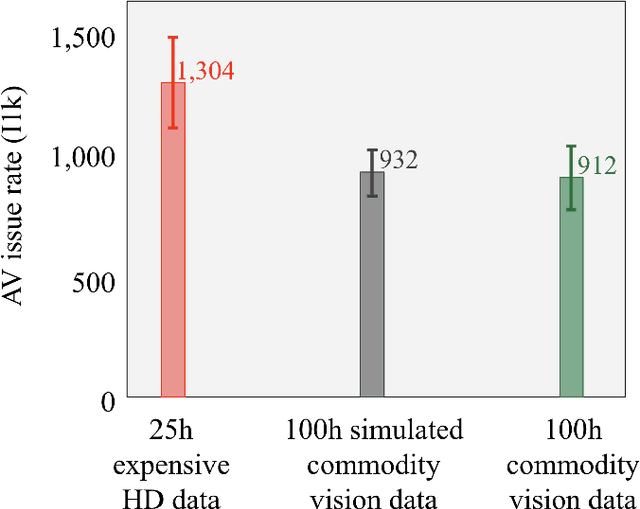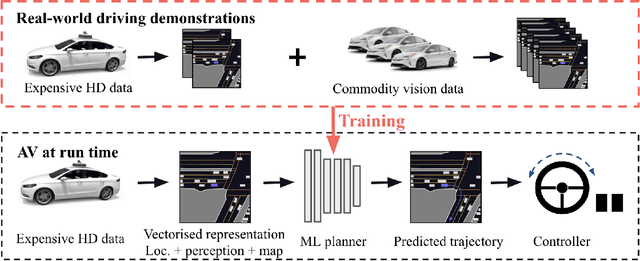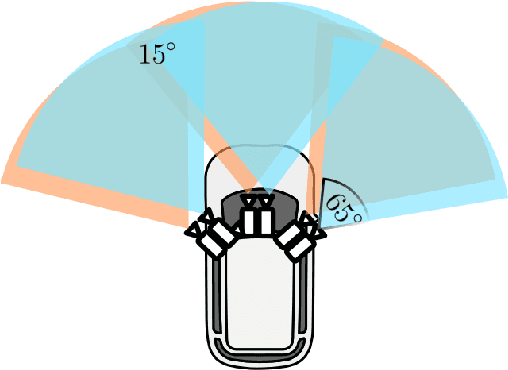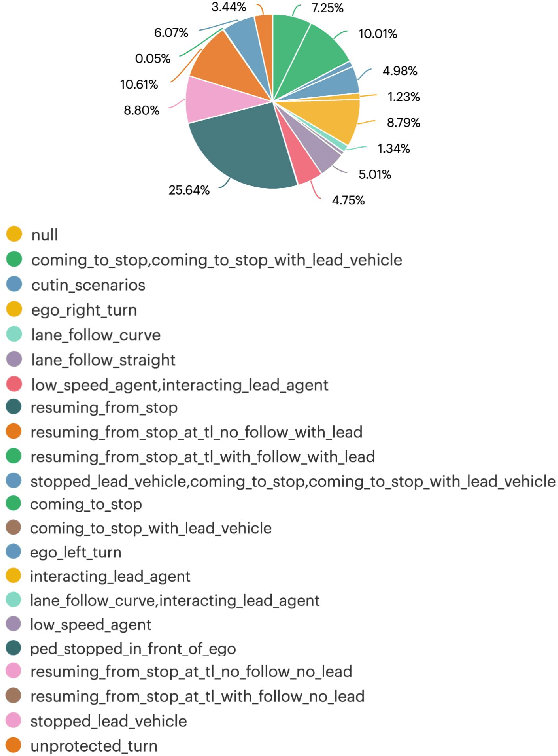Haoyue Zhu
Quantity over Quality: Training an AV Motion Planner with Large Scale Commodity Vision Data
Mar 03, 2022



Abstract:With the Autonomous Vehicle (AV) industry shifting towards Autonomy 2.0, the performance of self-driving systems starts to rely heavily on large quantities of expert driving demonstrations. However, collecting this demonstration data typically involves expensive HD sensor suites (LiDAR + RADAR + cameras), which quickly becomes financially infeasible at the scales required. This motivates the use of commodity vision sensors for data collection, which are an order of magnitude cheaper than the HD sensor suites, but offer lower fidelity. If it were possible to leverage these for training an AV motion planner, observing the `long tail' of driving events would become a financially viable strategy. As our main contribution we show it is possible to train a high-performance motion planner using commodity vision data which outperforms planners trained on HD-sensor data for a fraction of the cost. We do this by comparing the autonomy system performance when training on these two different sensor configurations, and showing that we can compensate for the lower sensor fidelity by means of increased quantity: a planner trained on 100h of commodity vision data outperforms one with 25h of expensive HD data. We also share the technical challenges we had to tackle to make this work. To the best of our knowledge, we are the first to demonstrate that this is possible using real-world data.
Identifying Candidate Risk Factors for Prescription Drug Side Effects using Causal Contrast Set Mining
Jul 20, 2016



Abstract:Big longitudinal observational databases present the opportunity to extract new knowledge in a cost effective manner. Unfortunately, the ability of these databases to be used for causal inference is limited due to the passive way in which the data are collected resulting in various forms of bias. In this paper we investigate a method that can overcome these limitations and determine causal contrast set rules efficiently from big data. In particular, we present a new methodology for the purpose of identifying risk factors that increase a patients likelihood of experiencing the known rare side effect of renal failure after ingesting aminosalicylates. The results show that the methodology was able to identify previously researched risk factors such as being prescribed diuretics and highlighted that patients with a higher than average risk of renal failure may be even more susceptible to experiencing it as a side effect after ingesting aminosalicylates.
 Add to Chrome
Add to Chrome Add to Firefox
Add to Firefox Add to Edge
Add to Edge